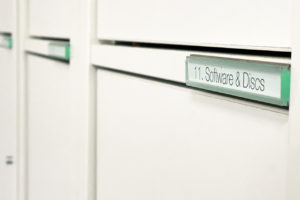Building Your Brand with Solar Signage
Brands gain prestige when they reduce their dependence on energy sources that release greenhouse gas emissions. Our last blog post discussed the exponential growth of solar energy as a renewable power source and the viability for its use in the United States. This post explores how solar energy can be harnessed to power your exterior signage. One of the first brand images that people see as they approach your facility is your exterior signage. Therefore, solar signs provide an ideal opportunity to showcase your organization’s dedication to reduce your carbon footprint. Your green commitment builds your brand beyond your organization’s main business or function.
Benefits Provided By Solar Signage
Besides conserving energy and not having to pay for electricty to power the signs there are a number of benefits that solar signs provide. In areas surrounding your facility that do not have ready sources of electrical power, using solar signage can eliminate trenching costs. Running electrical lines a distance from your electrical power source requires digging as well as laying and burying the lines, which can be very expensive. Selecting solar signage also reduces the disturbance to traffic and pedestrians brought about by trenching. Solar signage provides an opportunity to place multiple signs around your facility in locations that would not otherwise be easy to power.
In addition to aiding wayfinding and branding, solar signage, when used where it is too costly to trench and run electrical power, adds more ambient lighting. People are naturally attracted to well-lighted facilities. Ambient light enhances safety. It results in safer walkways, safer driveways and safer parking lots. Ambient light also makes streets, driveways and parking lots safer to navigate for motorists who do not see as well at night.
The primary benefits of solar signage include:
- Supports Sustainability Initiatives
- Valuable Brand Enhancement
- Operating and Financial Advantages
- No Monthly electricity costs
- Rapid Return on Investment (ROI)
- Often Less Expensive to Install than Conventional Illuminated Signs
- Low Voltage / Reduced Liability
- Offset CO2 Emissions – Green Products
- Immune to Power Outages
The new “look” of solar is quite different from the old image of ginormous photovoltaic (PV) solar panels. Much smaller PV solar panels are now used and they can be faced in different directions from the signs themselves so that signs can face in any direction. Solar panels must be located in areas that receive direct sunlight. Solar signs can include large monument or monolith signs, directories with or without maps and signs on buildings. Solar signs can share important emergency preparedness and evacuation information. Solar signs have the added benefit of remaining lighted even when the power grid goes down. Weather events such as bad storms and hurricanes can result in blackouts lasting for hours and sometimes days.
Solar Sign Components
Today’s solar signs are composed of a variety of components. Most obvious are photovoltaic panels, which collect the radiance from the sun and convert it to electricity, batteries, which store the electricity, and LED strips, which light the signs. The brain of solar signs, the power management system, is not as obvious. The power management system is key as it enables the solar sign to adapt to an ever-changing environment. The power management system is essentially a computer inside the solar sign. Power management systems solve challenges including:
- Seasonal Variances – the amount and length of sunlight changes throughout the year
- Environmental Variances – every day isn’t sunny
- Directional Variances – signs aren’t always facing south, shade may vary as well as reflections from buildings and traffic headlights
- User Requirements – signs are typically lighted seven days a week but the hours may change on different days and at different times of the year
Power management systems are run by software that takes into account all these variables and accounts for contingencies so that solar signage is dependable. Power management systems can be programmed with over forty years of local data to make sure that signs will remain lighted.
Solar signage is durable with batteries, LED strips, PV panels and power management systems designed to last many years. LED light panels typically last fifteen years or longer and PV panels are normally warrantied for twenty-five years.
Tax Credits and Rebates
Checkout DSIRE (Database of State Incentives for Renewables & Efficiency). It provides information on available federal tax credits, state rebates and utility rebates. There is money out there for use solely on green applications and this website provides useful information to help figure out how you may be able to offset some of the solar signage costs.
Solar signage is a ”no-brainer” when an electric power source isn’t located nearby. Solar signs are an excellent option in many locations to both convey messages and to promote your brand’s green commitment. Once installed solar signs eliminate all energy costs while being dependable in the event of power outages.
John Selig
Marketing Manager






